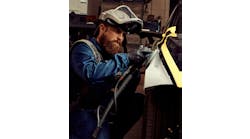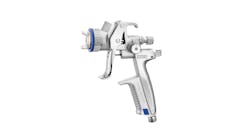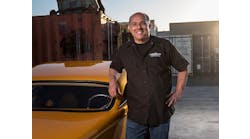Where was the collision repair industry headed in 2015? FenderBender did its best five years ago to cover the emerging trends and to make some educated guesses, even predictions, about what those trends would mean for the industry.
Half a decade on, it’s time to review five trend stories to see where the industry is now—how prominent are direct repair programs? Do shop owners still rely on phones and fax machines for parts procurement? Is aluminum repair a sales leader? What became of advanced paint-drying technology? And did consolidation transform the U.S. collision repair industry? See how some of FenderBender’s predictions played out, and what might be coming next, in this five-year review.
The Trend: DRPs’ increased presence
The Story: “A Changing Landscape,” January 2015
The gist: An overview of direct repair programs, including some of the challenges they present, alongside their benefits, and reporting on some of the lawsuits challenging DRPs.
The prediction: Shop owners quoted in the story saw 2015 and its lawsuits as a “revolution.” The story said, if the various lawsuits were successful, “It could mean the end of the DRP.”
How it played out: DRPs never went away, but they are changing, with shop owners taking back some ground from insurers.
That’s according to Bill Sefcek, president of Stan-Mitchell Enterprises, an advocate for collision repair shops and technicians, and a former longtime employee of State Farm. In fact, Sefcek even takes it a step further.
“Five years ago, DRPs probably ran their course,” he says, arguing that at least some shops became fed up with the pushes and pulls presented by the programs and sought out other ways to do business (he adds: “Lawsuits never work.”).
Findings from FenderBender shop surveys back him up. As cited in the 2015 story, the magazine’s KPI Survey, carried out the year prior, found that about 70 percent of responding owners and managers said their shops generated a portion of their revenue from DRPs. Per the 2020 FenderBender Industry Survey, just 65 percent of responding shops said they rely on DRPs.
Sefcek says part of the move is shops managing claims, meaning there are fewer adjusters, more photo estimates, and a more streamlined process.
He says he sees more independent shops saying to insurance companies, “let’s sit down and talk about this, because I need to run the way I need to run to be efficient.”
The OEs are the collision industry’s friend at the moment, Sefcek adds, because between their certification programs and repair standards, original equipment manufacturers are providing shops with the documentation they need to be fully reimbursed for complete repairs. Some OEMs, he says, are even bundling vehicles with insurance policies, which require OEM parts for repairs.
Though there are changes happening in the world of insurer/collision repair shop relations, Sefcek says, he still doesn’t think DRPs will completely go away. MSOs and other operations, without the means to effectively market what they do, will still look to them for business.
“They probably will never be gone,” he says, “they’ll evolve into something else.”
The Trend: Advanced paint-drying technology
The Story: “The Rise of Robotic Drying,” February 2015
The gist: The new technology of gas catalytic drying—aka robotic drying—drastically cuts drying times in body shops—“paint directly under the device can cure in less than one minute.” The prediction: The technology arrived in the U.S. in 2014, and the story spoke to people at shops who were early adopters. Said one shop owner, “This is the future of things.”
The current state: Though packed with potential, the technology hasn’t been adopted as expected in 2015, a fact borne out by FenderBender’s reporting on robotic drying and similar technology in the years since.
The various advanced drying technologies currently on the market—gas catalytic drying, electric infrared radiation drying—warranted a single question on the 2020 FenderBender Industry Survey, reflecting the tech’s fringe status. Asked, “Does your shop utilize advanced drying equipment, such as infrared technology,” 54 percent of respondents said “yes,” while 46 percent said “no.”
Patrick O’Neill, managing partner at San Diego’s Bodyshop Express and formerly involved with Bodyshop Revolution, a robotic drying system supplier, says the technology’s lack of use can be credited to a number of factors.
O’Neill says many shop owners and technicians aren’t ready for the change of pace the technology can bring. Shops would need to drastically change their operations for the drying technology to be impactful.
At Bodyshop Express, O’Neill says he can paint 50-55 vehicles per week with a single paint booth and maximized use of advanced drying technology (he says most shops could paint 25 vehicles per week). He says he uses the best process to do so, drying paint and primer quickly, eliminating his prep booth department, and having fewer departments in general.
“That’s the ideal process,” he says, “and to get people to get to the ideal process is almost impossible.”
Cost is another deterrent, O’Neill says. Symach, which makes gas catalytic, full-arc, robotic systems, prefers installations at new shops that can cost hundreds of thousands of dollars. There’s also confusion about those costs, he notes. Double-headed electric IR lamps can cost $14,000, while a handheld lamp can be bought for around $1,000.
Whether going with the higher- or lower-cost route, O’Neill says, some MSOs don’t see the need to invest in advanced paint drying tech when they can continue business as usual and get by just fine.
A possible future opening for advanced drying technology, O’Neill says, is the proliferation of computers in vehicles.
“There’s some vehicles right now that you can’t put in the paint booth and get above 130 degrees,” he says.
The Trend: Electronic parts procurement
The Story: “Parts Procurement’s New Era,” April 2015
The gist: On the rise of electronic parts procurement and the issues surrounding such systems, including insurance company-mandated suppliers. The story says that “Adoption [of such systems] has been slow moving so far,” noting that lots of shops at the time still relied on phones and fax machines to get their parts.
The prediction: It’s less a prediction, but more a dream scenario. In the story, a shop owner imagines an estimator wrapping up her estimate and parts order on a tablet, and pushing “order.”
“‘And in 27 minutes, your parts are delivered and you can get started,” [the shop owner] says. ‘How cool would that be?’”
The current state: Reality has been getting closer and closer to that scenario in the years since 2015, while the use of such systems has also risen.
According to a FenderBender survey cited in the 2015 story, 54 percent of responding shops said they used an electronic parts procurement system. According to the 2020 FenderBender Industry Survey, that number is now up to 70 percent.
Greg Horn, chief innovation officer for PartsTrader, says voluntary use of his company’s system has grown steadily since its controversial introduction a half decade ago (State Farm mandated the use of PartsTrader at its Select Service shops), because shops are finding it’s better than the phone or fax.
With nearly 11,000 U.S. collision repair shops using PartsTrader today, he says the company’s next step is creating new features within the system, reducing steps and making it more convenient to use. Horn says a new feature for the winter of 2020/2021 is the ability to pay for parts within the PartsTrader system.
Mark Fincher, VP of market solutions for CCC, echoes Horn. The more a system can do, he says, the more shops will use it.
CCC announced this past summer that it now processed $13 billion in parts annually by connecting shops with suppliers. New from the company for 2021, says Fincher, will be a purely web-based platform for estimates and parts procurement. Also coming from CCC is more intelligent parts sourcing, he says, which can cross-reference insurer and OEM rules regarding parts.
Another development from PartsTrader that’s not that far off is artificial intelligence for identifying parts needs, says Horn. A picture of the needed part and a VIN could be all that’s necessary to ID a needed part.
The goal, Horn reiterates, is “fewer clicks to pick.”
The Trend: The growing use of aluminum
The Story: “Advanced Materials: Collision Repair’s New Frontier,” June 2015
The gist: The 2015 Ford F-150 and its aluminum body took “advanced materials from the novelty, specialty, exotic segment to Main Street America,” the story says. The story focuses on aluminum, how much it will be used in future vehicles, and what repairing it is going to look like.
The prediction: Of aluminum, a CARSTAR executive says, “This is the way it’s heading, it’s the future. You have to be on board or you’ll sink.”
The current state: Lots of shops are on board. According to the 2020 FenderBender Industry Survey, 70 percent of responding managers and owners said their shop has the capability and equipment to repair aluminum components. Of the remaining 30 percent of respondents who said they couldn’t, 12 percent said they plan to be able to repair aluminum soon.
Randy Sattler, who runs Rydell Auto Body and Glass in Grand Forks, N.D., backs up the survey’s findings, saying that in the years since that F-150 made its splash, working on aluminum has become standard.
He estimates that up to 40 percent of jobs that come through Rydell involve some sort of aluminum work, though he notes, getting set up to do the work safely and properly, is still a commitment. Shops need a clean room, separate work areas, welding equipment, and a separate set of tools specifically for aluminum work to avoid contamination.
“It’s very expensive,” Sattler says, “so if you’re going to do it properly, how are you going to set yourself up for that?”
Whether or not shops are set up for it, he says, manufacturers are using more and more aluminum, especially for panels. He says the material is here to stay and that shops “need to get people trained.”
As for the next advanced material for which to be ready, Sattler says carbon fiber and similar materials—Rydell sees about one job involving them per month, now—are poised to be in the position previously held by aluminum five years ago.
The Trend: Consolidation
The Story: “Inside the International Struggle of Independent Shops,” September 2015
The gist: A look at the collision repair industries in the United Kingdom, Australia, and Canada, and why they were trending away from independent shops and toward multi-shop operations.
The prediction: Seeing forces toward consolidation play out in other Anglophone countries, the United States collision repair market wouldn't be far behind.
How it played out: Though consolidation in the U.S. collision repair market has been an ongoing storyline, the level of consolidation seen overseas hasn’t happened here.
Focus Advisors Automotive in a recent report says there are some 32,000 collision repair shops in the U.S., with the M&A firm counting fewer than 9,000 of them as worthwhile purchases. It says only about 40 of the 125 MSOs in the country “are important enough to their markets to allow an acquirer new to the market to begin developing a regional presence.”
Dave Mitchell, owner of the Florida-based multi-shop operation MITCHCO, and a veteran of the consolidation game, having built and sold MSOs prior and working for Gerber Collision & Glass in acquisitions, says he sees a similar landscape, with many of the best options already bought by consolidators. He adds that bigger players are reluctant to go into rural areas, where it’s just too difficult to compete against deeply rooted, local businesses.
While Mitchell says larger consolidators have pumped the brakes in recent years and perhaps stepped on them harder as the COVID-19 pandemic created widespread economic uncertainty, he says he sees plenty of opportunity for small and regional MSOs to be able to grow. Mitchell points to his own recent experience of opening four locations despite the coronavirus, as an example.
He says he expects that as the shock of the pandemic wears off, driving will return to normal. The Focus Advisors report bears this out, noting that when it published in late July 2020, compared to February, miles driven in the U.S. were down by just 3 percent.
There’s potential for expansion, Mitchell says, in the areas larger brands aren’t willing to go. He says he grew his previous companies by building and buying in rural areas.
“Go where the big guys don’t want to go,” Mitchell says.




